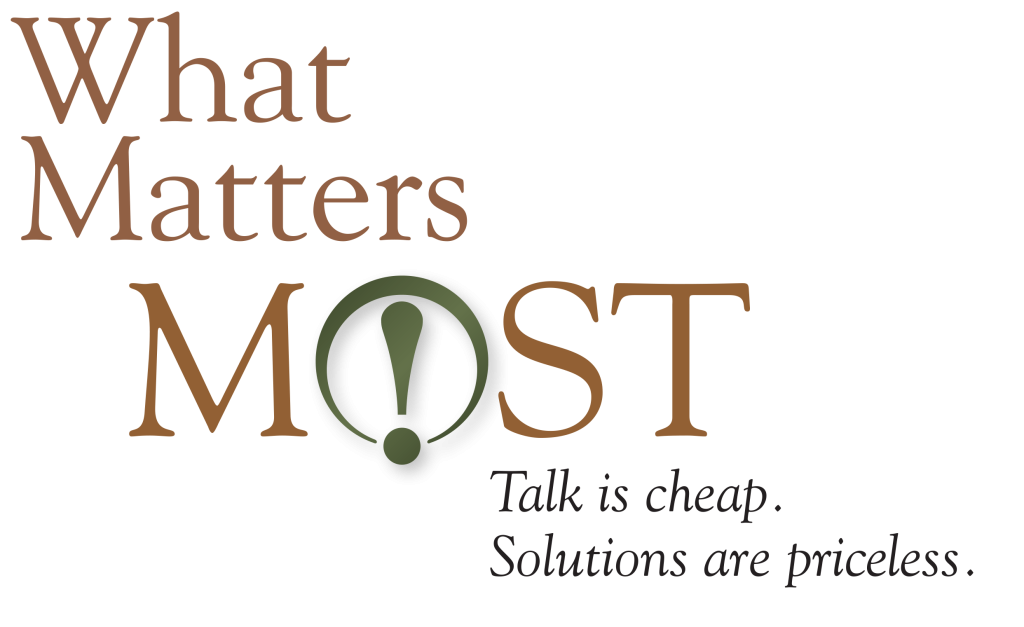Robert Pojasek, Ph.D. | Art Stewart, M.P.M.
It doesn’t take much research and nothing more than a few conversations with colleagues to quickly assess where the commonly felt pain points are for supply chain leaders in the current environment. The challenges are equally experienced between a large sourcing company and their preferred supplier organization.
The consensus centers on a range of factors: There is a significant need for better structures to support faster analysis, decision-making and operational execution. Sourcing companies want real-time end-to-end visibility of their entire supply chain, which requires greater transparency and more disclosure from suppliers. Everyone wants to improve predictability and have the right technologies in place to ride the frequent spikes in supply chain velocity due to unanticipated events and the cyclical nature of certain industries, such as retail. There is pressure to keep inventory and cash requirements low.
 New delivery models need to be constantly updated to adjust to consumers wanting everything, every time and anywhere. With significant increases in urban traffic, supply chain managers must now monitor urban developments to retain flexibility and speed. Operations managers must develop quicker responses to regulatory changes. Managing a more agile supply chain necessitates powerful interactive communication tools and collaboration platforms that are designed like social media channels. These platforms must be supported with advanced trans-organizational control structures and be integrated with other IT architectures while also ensuring that any overarching system is hack proof.
New delivery models need to be constantly updated to adjust to consumers wanting everything, every time and anywhere. With significant increases in urban traffic, supply chain managers must now monitor urban developments to retain flexibility and speed. Operations managers must develop quicker responses to regulatory changes. Managing a more agile supply chain necessitates powerful interactive communication tools and collaboration platforms that are designed like social media channels. These platforms must be supported with advanced trans-organizational control structures and be integrated with other IT architectures while also ensuring that any overarching system is hack proof.
How do supply chain leaders navigate this complex risk terrain that is now overlaid with increasing scrutiny regarding their ESG policies, operations and employee behavior?
 By implementing a next-generation operating model that delivers order and discipline to the rising tide of compliance requirements involving ethical trading/sourcing practices.
By implementing a next-generation operating model that delivers order and discipline to the rising tide of compliance requirements involving ethical trading/sourcing practices.
Through a combination of operations capabilities and supply chain disclosures, enhanced with digital technologies, sourcing company leaders and their preferred suppliers can create new value, lower costs and improve information that conforms to global ESG sourcing standards. In doing so, they will discover new business growth opportunities and dramatically improve their management of uncertainty.
Any next-gen model needs to account for the range of operational dynamics in two distinct streams:
- The business that is selling direct to individual customers who are personally concerned with the accuracy of reporting on ESG compliance information.
- The supplier that is applying technologies and agile operations to improve the effectiveness of their supply chain information submittals from end-to-end processes.
Moving Beyond What Has Been Available
The most widely used model in this area involves the action of a not-for-profit, third-party global membership organization, which has focused its efforts on coordinating the suppliers, standard-setting organizations, auditors and other stakeholders. It gathers supplier data using a questionnaire that is reviewed prior to submission to the member companies (the sourcing companies). Everyone involved in the process is required to join the organization and pay a fee, which enables this membership company to use a variety of different standards and archived data to help their members make informed sourcing business decisions in approximately 150 countries.
It gathers supplier data using a questionnaire that is reviewed prior to submission to the member companies (the sourcing companies). Everyone involved in the process is required to join the organization and pay a fee, which enables this membership company to use a variety of different standards and archived data to help their members make informed sourcing business decisions in approximately 150 countries.
A next-gen model will use an open-source, high-level information collection structure that is currently used in 180 countries, enabling the analysis of data using international standards on a SaaS-based platform that is designed as a management system. The standards are embedded within a company’s everyday functions, ensuring that the data entered in the SaaS platform conforms to the expectations of all stakeholders, including the end customers of any products and services. The entire supply chain uses the same model.
The standards that are utilized are derived from these organizations:
- Ethical Trading Initiative
- Social Accountability International
- International Labor Organization
- International Organization for Standardization
- Global Reporting Initiative
ESG requirements are expressed through all these standards and guidelines which, regardless of the actual outcome, must be addressed in one form or another. It is critical to the entire supply chain and the customer experience that a “no regrets” strategy be applied; one that maintains the integrity of the operations, including consistently achieving customer satisfaction.
Building a SaaS-Based Supply Chain ESG Program
Utilizing a SaaS-based tool as the foundation for a management system will help suppliers or sourcing companies create, maintain and report on their ESG priorities. By integrating the same high-level structure that is employed in 180+ countries around the world, all the ESG stipulations will work together when addressed by a facility or end-to-end supply chain.
Competency-Based Training methods may be used to assist company personnel in completing the information that will be entered into the SaaS platform. The entire management system can be established and reviewed remotely, using ZOOM video conferencing software.
 Once fully implemented, the ESG information in the SaaS-based tool can guide users in self-certifying the package and in providing a Conformity Statement on any aspect of the program on demand. The SaaS information can also be selectively shared with independent auditors in preparation of an audit, or since most large companies already use the international high-level structure in their operations, be used to replace internal audits with an e-audit capability.
Once fully implemented, the ESG information in the SaaS-based tool can guide users in self-certifying the package and in providing a Conformity Statement on any aspect of the program on demand. The SaaS information can also be selectively shared with independent auditors in preparation of an audit, or since most large companies already use the international high-level structure in their operations, be used to replace internal audits with an e-audit capability.
The categories within the high-level structure include:
Scope
Supply Chain ESG involves four areas: Labor practices, health and safety, environment and business ethics.
Normative References
Providing the authoritative international standards citations, along with ESG-based sourcing best practice citations, all in their most recent versions.
Terms and Definitions
If the standards do not have a detailed set of terms, they may be added to the SaaS platform so the companies and the users of the information are in agreement on what exactly they are evaluating.
Context
Each facility in the supply chain has a different context (external and internal operating environments). The SaaS platform features a program that assists facility management in defining their unique context and using it to determine the opportunities and threats associated with its ESG-based sourcing program. The program manages information related to:
- The organization and its context
- The needs and expectations of interested parties
- The scope of the ESG management system
- Details of the ESG management system
Leader’s Accountability
The top leader is held accountable for achieving the objectives set to ensure the viability of the ESG program. The program manages information related to:
- Leadership and Commitment
- ESG-based Sourcing Policy
- Roles, Responsibility and Authority
Planning and Risk Management
Taking actions to address potential adverse effects (threats) and potential beneficial effects (opportunities) for assurance that the Supply Chain ESG program will achieve its intended outcome; prevent or reduce potential undesired effects; and achieve continual improvement.
Determine how to integrate and implement these actions into the SaaS platform, and evaluate the effectiveness of these actions.
The organization must establish ESG-based sourcing objectives and determine how best to achieve them.
Program Support
At a minimum, the organization must determine how it will address:
- Resources
- Functions (e.g., Human Resources)
- Determining Competence
- Providing Awareness Development
- Communications (Internal and External)
- Documented Information
Operations and Workflow
The organization plans, implements and controls the processes and operations that are designed to meet the ESG-based sourcing requirements.
The organization controls planned changes and reviews the consequences of unintended changes, taking actions to mitigate any adverse effects, as necessary.
The organization ensures that outsourced processes are controlled.
Performance Evaluation
The organization plans, implements and controls the performance of the ESG-based sourcing program by paying attention to:
- Monitoring, measurement, analysis and evaluation
- Providing for the internal audit of the program
- Engaging in a management review at frequent intervals
Continual Improvement
Develop and maintain a program for identifying and studying non-conformities.
Create appropriate corrective actions, followed by a management review to prevent recurrence.
The organization must continually improve the suitability, adequacy and effectiveness of the ESG-based sourcing management system.
 The Pulse of Industry Leadership:
The Pulse of Industry Leadership:
Latest Survey of Supply Chain Leaders
The second annual joint survey of supply chain executives conducted by JDA Software and KPMG is complete and the results were published May 14, 2019:
- Artificial intelligence will help reshape the supply chain in the year ahead.
- End-to-end visibility continues to be the top priority across retail, manufacturing and logistics operations - driving digital supply chain investments powered by artificial intelligence (AI), machine learning (ML) and cognitive analytics (CA).
- Supply chain traceability and visibility continues to be the highest investment area for supply chain executives (77%).
- Executives plan to deploy or test cognitive analytics (82%), AI/ML (62%) or digital control tower (55%) technology in the next 24 months.
- AI/ML technologies are viewed as "the most impactful technology this year" (80%).
Organizations value AI/ML technologies for their ability to optimize inventory (51%) followed by predictive distribution (45%) and optimizing distribution networks (42%).
Respondents indicated that the highest value for AI technologies are increasing inventory and pricing accuracy for retail; improving demand forecasting for manufacturing; and optimizing distribution networks for logistics. SIP

